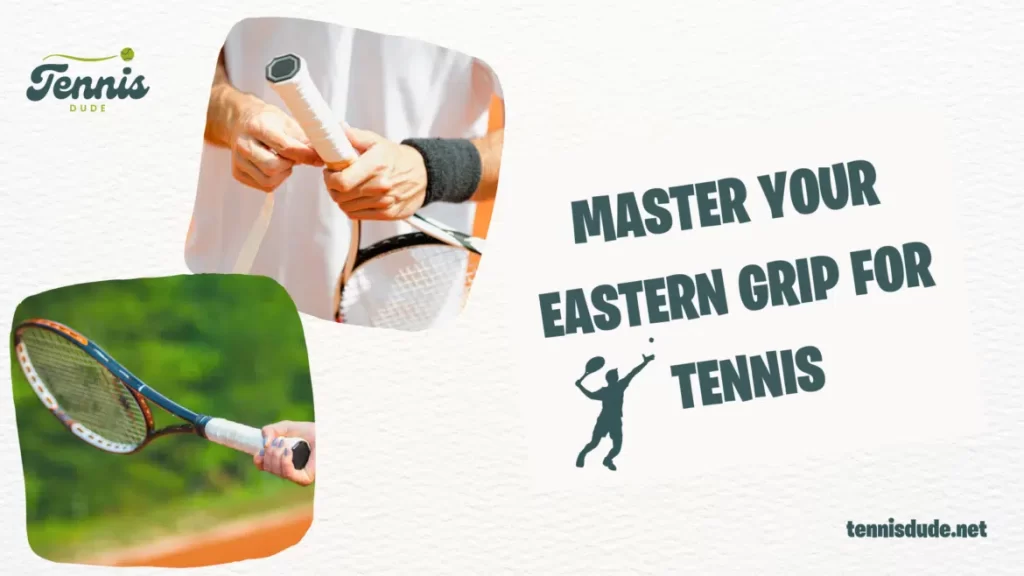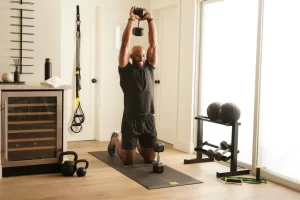Tennis is a sport that requires a combination of strategy, technique, and precision, and mastering the basics of grip is one of the first steps in becoming a successful player. Among the many grips used in tennis, the Eastern grip is one of the most versatile and widely used by players across different levels of play. Whether you’re a beginner learning the game or an experienced player fine-tuning your strokes, understanding the Eastern grip is essential for enhancing your performance on the court.
In this blog post, we will dive deep into the Eastern grip, exploring its advantages, how to execute it correctly, and the best shots to use it for. By the end of this guide, you’ll be well-equipped to incorporate the Eastern grip into your game with confidence.
What is the Eastern Grip in Tennis?
The Eastern grip is one of the most popular grips for both forehands and backhands. It is often considered the foundation of a traditional tennis stroke. This grip is named for its roots in the Eastern part of the world, where tennis was first developed and played at a high level.
To execute the Eastern grip, place the base knuckle of your index finger on the third bevel of the racquet handle. In simpler terms, when you hold your racquet, your hand should be positioned so that your palm is facing the net, with your fingers wrapped around the handle in a relaxed yet firm grip. The Eastern grip allows for a comfortable swing path and is versatile enough to be used for both aggressive and controlled shots.
How to Hold the Eastern Grip
Holding the Eastern grip is relatively simple, but it does require some attention to detail to ensure that the racquet feels comfortable in your hand. Here’s a step-by-step breakdown of how to correctly hold the Eastern grip:
-
Position the Base Knuckle: Place the base knuckle of your index finger on the third bevel of the racquet handle. This will align your hand in the proper position for an Eastern forehand or backhand.
-
Wrap Your Fingers Around the Handle: Once your index finger’s base knuckle is in position, wrap the rest of your fingers around the racquet’s handle. Ensure your grip is firm but not too tight. A relaxed grip is essential for fluid strokes and preventing unnecessary tension.
The Advantages of the Eastern Grip
The Eastern grip offers several advantages, making it a preferred choice for many players. Here are the key benefits:
-
Versatility: The Eastern grip is highly adaptable. It allows players to execute a variety of shots, from powerful forehands to controlled backhands. It is particularly beneficial for aggressive players who like to dictate the pace of the game but also useful for players who want to maintain consistency.
-
Balanced Spin: Compared to some other grips, the Eastern grip allows for a balanced mix of spin and power. It’s easier to generate topspin with the Eastern grip than with a continental grip, yet it still allows you to hit flatter shots with precision.
-
Ease of Transition: One of the major reasons players prefer the Eastern grip is its ease of transition between forehands and backhands. Because the grip is similar for both shots, players find it less awkward to switch from one stroke to the other, improving overall fluidity.
-
Control and Accuracy: The Eastern grip gives players more control over the racquet face, helping with shot placement and precision. Players can hit a variety of shots from different areas of the court, whether it’s a deep shot down the line or a precise angle into the corners.
-
Less Stress on the Wrist and Elbow: Compared to more extreme grips, like the Western grip, the Eastern grip can be easier on your wrist and elbow. It reduces the likelihood of overexertion or strain, especially during longer rallies.
The Eastern Grip for Forehands
The forehand is perhaps the most natural stroke for the Eastern grip. Using this grip for forehands allows players to strike the ball with good power and spin while maintaining control.
When hitting with the Eastern forehand grip, your racquet face should be slightly open, allowing for topspin to naturally occur as you follow through the shot. The angle of the racquet during the follow-through can help control the height and trajectory of the ball. The key to a successful forehand with the Eastern grip is maintaining a steady, controlled swing while ensuring that your body rotates with the shot.
Here’s how to hit a forehand with the Eastern grip:
-
Prepare Your Stance: Begin with a slightly open stance, positioning your body to face the side of the court.
-
Swing: As you begin your swing, turn your shoulders to generate power. The Eastern grip allows for a natural follow-through, with your racquet moving from low to high, creating topspin.
-
Focus on Contact: Aim to make contact with the ball just in front of your body, at waist height or slightly higher.
-
Follow Through: After making contact, continue the swing across your body, finishing with the racquet high and your weight shifting forward. This follow-through ensures a clean, powerful shot.
The Eastern Grip for Backhands
The Eastern grip is also commonly used for backhand shots, particularly the one-handed backhand. For players who prefer the one-handed backhand, the Eastern grip is ideal because it provides the stability and control needed for a smooth, consistent stroke.
To execute a one-handed backhand with the Eastern grip, follow these steps:
-
Set Your Position: Stand with your body facing the net, and get into a ready position.
-
Prepare for the Shot: Rotate your shoulders to prepare for the backhand swing. With the Eastern grip, your non-dominant hand should be at the throat of the racquet, stabilizing it as you swing.
-
Hit the Ball: Swing the racquet across your body, making contact with the ball just in front of your body.
-
Finish: Allow your racquet to follow through across your body, ensuring that your arm stays relaxed.
When to Use the Eastern Grip
While the Eastern grip is versatile, it works best in certain scenarios. Here are a few situations where you might want to consider using the Eastern grip:
-
Baseline Play: The Eastern grip is ideal for baseline rallies, where consistency and control are key. It allows for stable strokes with enough power to maintain a competitive edge.
-
Flat Shots: If you’re aiming to hit flatter shots with less spin, the Eastern grip can help you achieve that while still maintaining accuracy.
-
Transitioning Between Strokes: As mentioned earlier, the Eastern grip allows for quick transitions between forehands and backhands, making it ideal for fast-paced games where you need to switch up your shots quickly.
Conclusion
The Eastern grip is one of the most fundamental and widely-used grips in tennis, offering versatility, control, and balance between power and spin. Whether you’re a beginner or an advanced player, mastering the Eastern grip is an essential skill that will elevate your game. It is particularly beneficial for those looking to strike a balance between consistency and aggression on the court.






